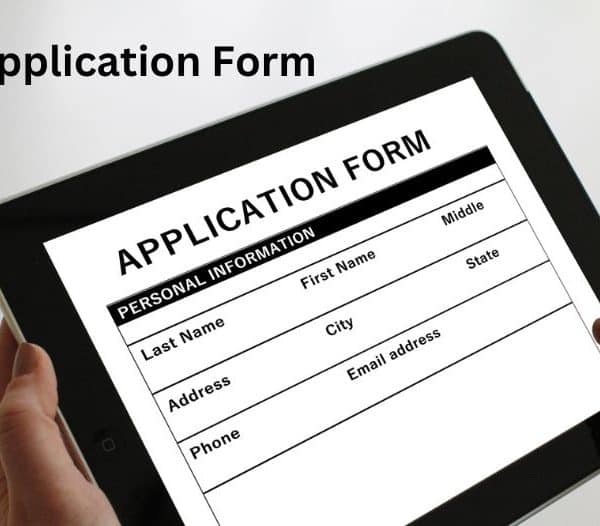The Civil Services Examination, held annually by the Union Public Service Commission of the Union (UPSC), is your ticket to the elite civil service career. The UPSC CSE has three steps, Prelims, Mains, and Interview (Personality Test), this exam is carried out. Ultimately, only about 1000 individuals make it to the final, beginning with a few Lakh candidates. In order to make it to the list, you need to first know how many questions in UPSC prelims are there and how many questions to attempt to get a good ranking.
In UPSC Prelims, the two distinct papers hold negative marking. The paper has 200 marks, meaning the total marks of the UPSC prelims are 400 marks. But it must be remembered that in IAS Prelims, there is a negative marking.
IAS Prelims Exam Pattern
The date for the UPSC Prelims Exam is October 10, 2021. For the Prelims stage, the UPSC test pattern comprises two papers that are administered on the same day. The objective type questions on both exams include multiple-choice solutions.
The prelims test is a screening process that selects applicants for the mains exam. The scores earned at this stage do not contribute toward the final merit list, but applicants should study hard for this test because cut-offs change year to year and are based on the average score.
The following are the UPSC prelims pattern details:
| Paper | Type | No. of questions | UPSC Total Marks | Duration | Negative marks |
| General Studies I | Objective | 100 | 200 | 2 hours | Yes |
| General Studies II (CSAT) | Objective | 80 | 200 | 2 hours | Yes |
| Total UPSC marks for Prelims | 400 | ||||
UPSC Prelims 2021 Syllabus
Paper-I (General Studies-I)
Current events of national and international importance.
History of India and Indian National Movement.
Indian and World Geography – Physical, Social, Economic Geography of India and the World.
Indian Polity and Governance – Constitution, Political System, Panchayati Raj, Public Policy, Rights Issues, etc.
Economic and Social Development – Sustainable Development, Poverty, Inclusion, Demographics, Social Sector initiatives, etc.
General issues on Environmental Ecospecialization General Science
Also Read : Life of an IAS Officer: An Insight into the Life after Cracking the UPSC Exam
Detailed UPSC Prelims Syllabus 2021
Check out the subject wise syllabus for UPSC Prelims 2021 in the table below:
|
|
|
|
|
|
|
|
|
|
|
|
Paper-II (CSAT)
Comprehension
Interpersonal skills including communication skills;
Logical reasoning and analytical ability
Decision-making and problem solving
General mental ability
Basic numeracy (numbers and their relations, orders of magnitude, etc.) (Class X level), Data interpretation (charts, graphs, tables, data sufficiency etc. – Class X level)
Questions for UPSC Prelims Paper 1
The Union Public Service Commission Paper1 is officially referred to as the General Studies I Paper and is frequently referred to as the General Awareness paper. There will be 100 questions, and you’d have 2 hours to finish it up.
There will be four options for each query, from which you should select the correct answer. It will cost you 1/3rd of the marks allocated to that question for each incorrect answer.
You should rank the cut-off mark (minimum required mark) in this paper as recommended by the commission to clear it.
How Many Questions to Attempt in UPSC Prelims Paper 1?
There will be 100 questions in total so try to aim at solving around 75-85 questions correctly and later on solve 10-15 questions which you know the answer partially. There is no compulsion to answer all the 100 questions. Attempting queries that you are sure of otherwise negative markings can do a lot of harm.
Questions for UPSC Prelims Paper 2
The second paper is called General Studies Paper-II. It is often referred to as the Civil Services Aptitude Test (CSAT). There are 80 questions in this article, and you will have 2 hours to complete it. There will be four choices given here again, and you have to pick the right one.
A penalty of 1/3rd of the total marks allocated to that question will be needed for an incorrect answer. You have to score 33 per cent or 66 marks in the exam in the GS paper II.
Try to be in a Safer Zone, Attempt these Many Questions
Since there will be 80 questions, try aiming to solve 40-45 questions at least and work your way through educated guessing. Adopting this method, you can attempt around 70-75 questions which can obtain you a score of 120 out of 200. Do not answer queries that you are clueless about.
Also Read : Important Current Affair Topics for UPSC 2020: Tips to Tackle Current Affairs
UPSC Cutoff 2020
| Exam | General | EWS | OBC | SC | ST | PwBD-1 | PwBD-2 | PwBD-3 | PwBD-5 |
| Prelims | 92.51 | 77.55 | 89.12 | 74.84 | 68.71 | 70.06 | 63.94 | 40.82 | 42.86 |
| Mains | 736 | 687 | 698 | 680 | 682 | 648 | 699 | 425 | 300 |
| Final | 944 | 894 | 907 | 875 | 876 | 867 | 910 | 675 |
After the declaration of the UPSC Final Result in the month of May 2022, UPSC IAS cut off 2021 will be issued by the authority. In order to grab the position, applicants have to apply for the cut-off.
UPSC Prelims Expected Cutoff 2021
After the UPSC IAS exam procedure is completed, the official IAS (UPSC CSE) Cutoff 2021 will be announced. The cutoff score reflects the level of competition as well as the complexity of the question paper. After each round of the test, the Union Public Service Commission (UPSC) will announce the cutoff score.
| Category | IAS Prelims Expected Cutoff (out of 200) |
| General | 105+5 |
| EWS | 95+5 |
| OBC | 100+5 |
| SC | 87+5 |
| ST | 83+5 |
| PwBD1 | 55+5 |
| PwBD2 | 47+5 |
| PwBD3 | 43+5 |
| PwBD5 | 65+5 |
Also Read: IAS Preparation Strategy for Beginners: Boost your UPSC Preparation Today
UPSC CSE Preparation Tips 2021
Cover the Whole Syllabus
The syllabus should be thoroughly covered. Whatever the historical patterns, no portion should be taken for granted. UPSC may favour any section of the vast syllabus, therefore it’s best to stay on the safe side. In UPSC Prelims 2021, too much flavour from the Ancient India section should be a lesson.
Attempt Mock Test
After covering a significant amount of the curriculum, a sufficient number of mock exams should be taken. A suitable number of mocks should be used. Too many tests will sap your vital vitality, while too few will leave you unprepared.
Mocks should only be provided in an exam-like setting. It’s a good idea to just participate in one standard Test Series.
A post-test analysis is a must-do activity. High achievement should not be accompanied by euphoria, and low achievement should not be accompanied by frustration. Simply run the race in order to keep improving.
Proper Revision
The Prelims syllabus is extremely extensive and dispersed. It’s more essential to consolidate the full content than it is to cover it. As a result, revisions should be fair and timely. Coverage of the syllabus and review of the covered section must strike a delicate balance.
The syllabus should be thoroughly examined and prioritised. The part of the curriculum that is more data and fact-based should be reviewed several times before the test. Such sections might be saved for last-minute revision to keep them fresh in your mind.
Make Proper Notes
There is no way to complete the UPSC syllabus in a thorough manner without taking enough notes. Notes should be written in a certain manner to make it easier for candidates to memorise and duplicate them. Notes should not be overly voluminous, and their function should always be kept in mind.
Don’t Add Topics in the Last Month
Unless it’s really extraordinarily necessary, the last month prior prelims should not be used to cover any new material. The entire month should be dedicated to revision. Mains can be taken concurrently with Prelims, however, only a fraction of the time spent on each should be explained.
Take CSAT Seriously
The previous month’s prelims should not be utilised to cover any new content unless it’s absolutely essential. The month should be devoted entirely to revision. Mains and Prelims can be taken at the same time, but just a percentage of the time spent on each should be mentioned.
UPSC 2021 Related Queries
#1. How many Marks are Needed to Clear IAS Prelims?
Candidates need to clear each paper separately to clear UPSC CSE prelims as follows:
# Prelims Paper I: It is important to secure the minimum cut off marks declared by UPSC.
# Prelims Paper II: 33% of the overall points, or roughly 66 points.
#2. How to Increase Marks in UPSC Prelims?
Instead of reading every Union Public Service Commission preparation book that comes your way, keep the data sources restricted to a few reliable ones. To improve quality, practice, and consistently evaluate your results. Throughout the planning, stay concentrated and relaxed as a hurried preparation technique ends up doing more harm.
#3. What is the Education Qualification for IAS?
An undergraduate degree or equivalent from a recognized university either by full-time education or distance education is the educational eligibility for IAS. The university must be approved by the UGC or set up by a central or state legislature act.
Conclusion
Last but not least, to test your abilities, you should take mock tests available all over the web. The practise tests will let you know when you stand and which areas you need to focus on. The first paper requires you to perform well only then will you be qualified for Paper-II so gear up and give your best in the first go!
Check out the courses and videos on UPSC Pathshala now and crack your exam on the first attempt.
Also Read: Last Minute Preparation for UPSC Prelims 2020: Here’re Some IAS Tips to Calm you Down







Thank you for providing this essential information.
This article has an essential information for the exam.
The syllabus covered here has helped me a lot.